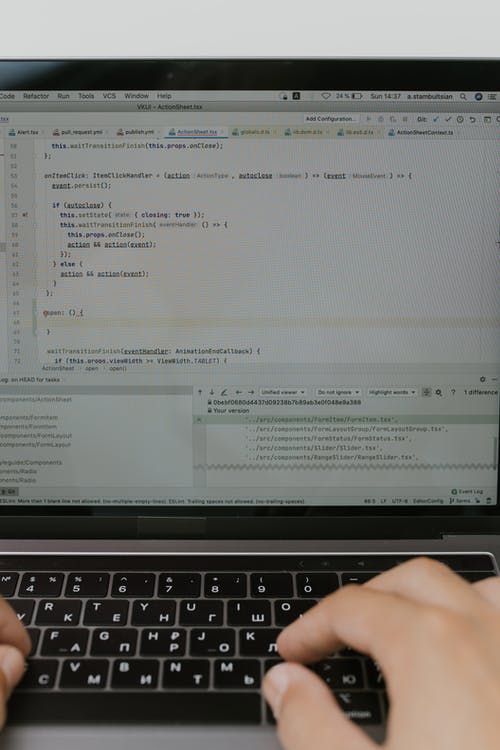5 Simple Ways To Implement PKI
As businesses are going digital for sharing information and electronic transactions, they face stringent data integrity regulations and compliance challenges. Moreover, with more than half of the global population accessing the Internet, any minor breach would offer cybercriminals a lot of potential targets, negatively impacting an organization’s reputation.

Source: pexels.com
While numerous authentication methods safeguard an organization’s sensitive data, none evokes the same trustworthiness and reliability as public key infrastructure (PKI).
PKI is a powerful, reliable system that helps organizations authenticate user identity and regulate access. It assigns digital identities to end-users, systems, and applications, authenticating the identity holder and establishing secure communication within the network.
A well-planned and executed PKI architecture is crucial to ensure a high level of information security, confidentiality, and authentication control. Here are five simple ways to help you implement a PKI architecture and enhance network security.
Coming Up Next
1. Understand the Need to Implement a PKI Architecture
Most organizations deploy a PKI architecture without considering their project requirements, policies, and procedures. This approach often leads to vulnerable gaps and security risks after the PKI system is in place, exposing sensitive information and increasing the organization’s cost in responding to such threats.

Source: pexels.com
You’ll need a high-level understanding to create a structured and detailed plan for your PKI design and implementation process before deploying it. Moreover, since the PKI system governs the administration, configuration, and use of digital certificates, planning will help you carefully consider various security policies and comply with them.
2. Gain Insights Into Your Non-Negotiable Security Risks
Merely implementing a robust PKI system isn’t enough if you aren’t aware of your business’s security risks. Business risks can come from internal and external sources, such as non-compliance, information breaches, phishing, and malware attacks. Hence, a risk assessment is fundamental to any organization’s PKI implementation program.
Risk assessment helps you identify, assess, and prioritize business risks. Moreover, this management provides a platform to analyze the overall security posture of your organization.
Furthermore, gaining insights into your non-negotiable security risks will help you implement a flexible PKI solution that is adaptable from one business unit to another and stays relevant in the long run.
3. Decide Between Cloud-Hosted or In-House PKI
After analyzing the non-negotiable network security risks, it’s time to plan your PKI architecture. Most enterprises struggle to decide between a hosted PKI or an in-house PKI.
- In-House PKI: This method derives most of the PKI’s function from its certificate authority (CA). It offers complete control over your certificate creation, distribution, and management. However, handling the entire root certificate process increases the overall cost and might put the organization’s reputation at risk if the issued certificates are compromised.
- Cloud-Hosted PKI: Unlike in-house PKI, cloud-hosted PKI services supply PKI capabilities on demand. This approach eliminates the need to set up physical infrastructure, thus reducing financial costs, resources, and time.

Source: pexels.com
Try to weigh the opportunities and obstacles of each approach before committing to your ideal PKI architecture. Moreover, prioritize your end-users and identify which method will help them obtain certificates conveniently.
4. Create a Certificate Policy (CP) or Certificate Practice Statements (CPS)
Numerous aspects within the PKI architecture cannot be changed once configured. If misconfigured, these aspects can leave a lasting impact on the usefulness of PKI. Moreover, most enterprises implement PKI with lower security controls to save time and operational costs.
The PKI architecture consists of excellent frameworks, including certificate policy (CP) and certification practices statements (CPS), which define your specific PKI governing requirements, including certificate name, authentication, key generation, operational controls, legal matters, and much more.
CP/CPS significantly influences your PKI design and implementation, so it’s essential to create these documents that best represent your organization’s processes and requirements. Furthermore, maintaining the right balance between the PKI governance framework and technical implementation will ensure a robust, healthy PKI architecture.
5. Automate Digital Certificates
Digital certificates are fundamental to PKI implementation and management, as they establish a layer of cybersecurity protocols that determine the credential authentication of users and systems within your organization.
While the PKI system allows organizations to manually or automatically deploy and manage these certificates, improper manual certificate management can expose your organization to various security risks, including data breaches, poor customer experience, and compliance issues.
Hence, enterprises must automate certificate deployment, reducing human error and certificate-caused outages, thus ensuring a smooth PKI implementation at a large scale. Moreover, leveraging automation will help your organization to comply with various privacy regulations.
Conclusion
Securing sensitive information is a significant challenge for all organizations, and a well-implemented PKI architecture can help you overcome this challenge and dramatically enhance your organization’s security. PKI has now emerged as a core requirement to secure digital communication and transactions. Moreover, implementing PKI demonstrates your company’s dedication toward securing its network and user information. Understanding an organization’s business and security needs is crucial for a successful PKI implementation and reap its widespread benefits.



